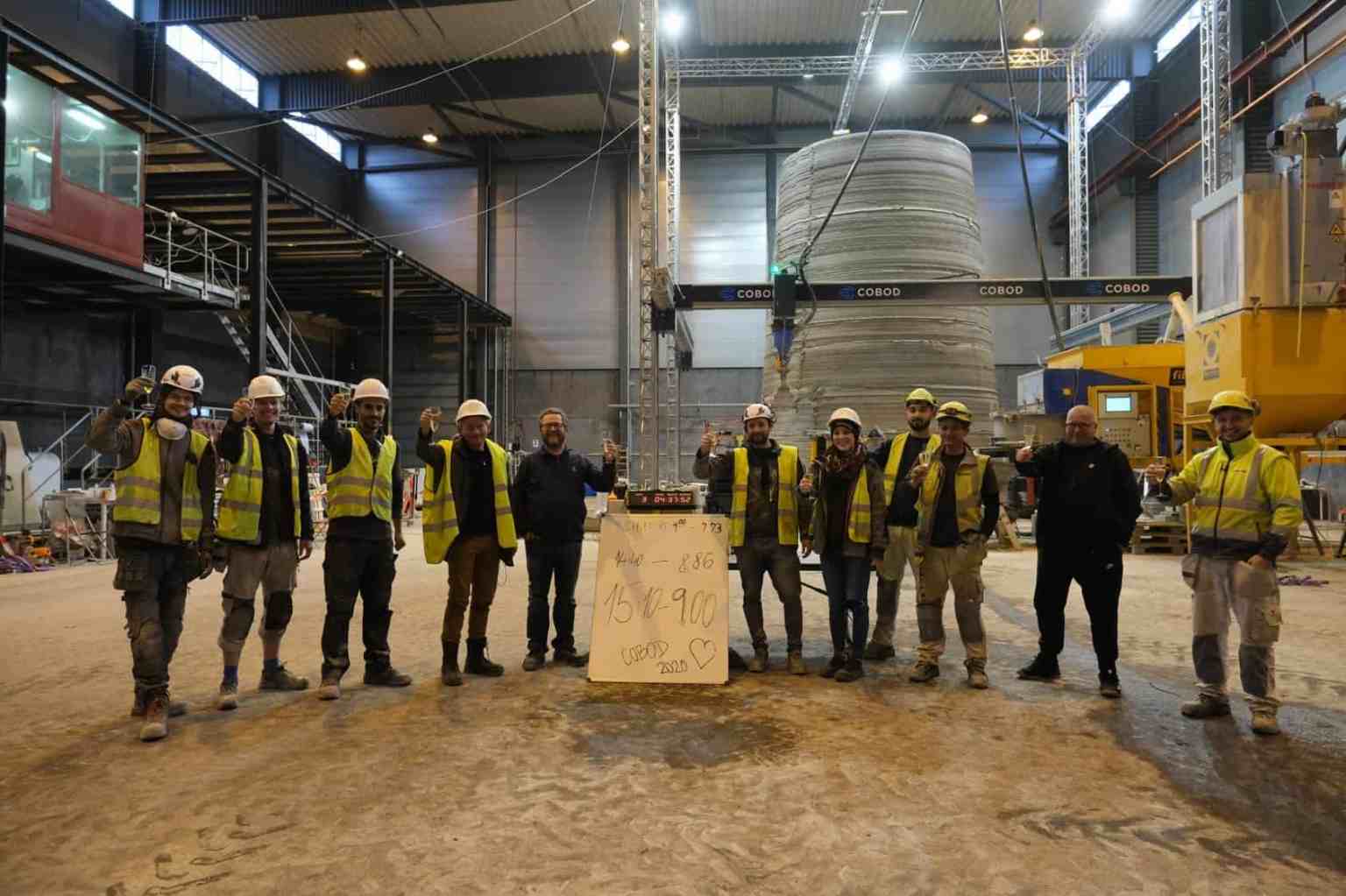GE Renewables Additive Manufacturing
Re:Build Optimation is seen as a strategic partner for GE Renewable Energy’s Additive Concrete Technology Development Program, working to develop industrialized equipment and process solutions for on-site construction of large-scale concrete structures to support wind turbine generators. Re:Build Optimation consistently demonstrates a high level of technical acumen for solving complex equipment and process challenges, along with the flexibility to adapt quickly to the evolving needs of our technology development initiative.
GE Renewable Energy’s Additive Manufacturing is developing skyscraper-sized wind turbines using massive 3D-printed concrete bases, right at each wind farm site. Re:Build Optimation is working with GE to engineer the equipment and support the printer and process, and the materials that will eventually be deployed around the world. The technology will print bases up to 20 meters high with 120-130-meter-tall steel tower sections to be installed to bring total height to 140 meters (over 450 feet). To date smaller scale platforms have been printed and tested. Full scale units are planned for the near future. Taller turbines can capitalize on stronger winds at higher altitudes, and the structures support larger blades that generate more power. But building bigger turbines makes transporting the pieces needed to put it together a logistical nightmare. GE and Re:Build Optimation plan to 3D print the base of a turbine wherever they want to place it, so that they won’t need to haul around such a gigantic hunk of concrete or steel. This produces positive environmental, financial, technical, and logistical results for GE and its customers.
The initiative to produce the concrete Bases (also called pedestals) supporting these very tall steel wind turbine structures is motivated by the need to reduce the carbon footprint, labor, and risks involved with erecting wind farms in remote locations. The concrete pedestal requires less manual labor than does a steel base. Shipping and handling of large steel sections over the road consume a lot of energy and the steel is in a short supply. Locally sourced materials to produce the concrete contribute to a better environmental impact outcome. Fabricating the pedestals right at the site from the raw materials is fast, efficient, and flexible in its setup and teardown. Financially the additive approach is expected to be less expensive to perform in the field, thereby reducing the cost of the electricity production.
GE recruited an international team of partners to bring various specialties and capabilities to the program. Department of Energy funding which contributes to the program, drove milestones and metrics that the team works to. Re:Build Optimation supported the trial build in Denmark of the first 10-meter-tall pedestal in 2019, and the follow-on advanced version in 2020. Structural analysis of the 3D printer frame (a large, steel gantry crane-like structure) was performed by Re:Build Optimation to drive the design to a point where it could be approved for use in the USA, complying with safety codes and localized regulations.
Re:Build Optimation also developed specifications for, and purchased, the mixing equipment and concrete batch plant. We integrate these into the 3D printing system, and assist with the formulation of the raw materials, and setup of a “lab” for additional test pieces and process learnings. Additional related engineering and fabrication work on specialty challenges that arise make up the current scope of Re:Build Optimation’s efforts as the program moves towards a full 20m tall pedestal in the field in 2022.
The program is meeting the DOE and GE objectives, advancing the technoeconomic feasibility of this effort. The team has achieved the interim goals and is aggressively pushing toward the field print as the next major objective.

Let’s talk about your unique challenges and how Re:Build Optimation can help you.